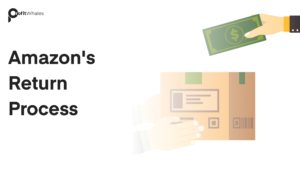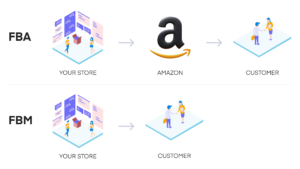In 2024, understanding Amazon’s return policy is critical to running a successful business on the platform. Whether utilizing Fulfillment by Amazon (FBA) or Fulfillment by Merchant (FBM), return management plays a major role in maintaining customer satisfaction, protecting profit margins, and managing inventory effectively. With constant updates to Amazon’s return policy, staying informed is essential for sellers to remain competitive, avoid penalties, and maximize their potential on the platform.
This guide provides a detailed look into Amazon’s 2024 return policies, with a breakdown of key updates, best practices for managing returns, and strategies to minimize the impact of returns on your business.
Understanding Amazon’s Return Policy in 2024
Amazon’s return policy has always evolved to balance protecting customers and making the platform appealing to sellers. In 2024, this balance remains crucial, as the policies have seen several updates that sellers must be aware of to handle returns efficiently. From managing international returns to extended return windows during peak shopping periods, these policies directly affect how sellers plan their inventory, manage cash flow, and ensure customer satisfaction.
Key Updates to Amazon’s Return Policies for Sellers
In 2024, Amazon introduced several changes to its return policy, particularly aimed at improving customer convenience. Here are the most significant updates sellers should know:
- Extended return windows: Amazon has extended the return periods for many items, especially during the holiday season. Instead of the usual 30 days, customers now have until the end of January to return items purchased in November or December. While this is convenient for customers, it can present challenges for sellers who may face delayed returns and inventory disruptions.
- Returnless refunds: One of the key updates in the Amazon return policy for sellers is the increased use of returnless refunds. Sellers can now offer customers a refund without requiring the product to be returned, particularly for low-value items. This saves on return shipping costs and speeds up the resolution process. However, sellers must carefully assess when to use this option to avoid eroding their profit margins.
- International return policy adjustments: Managing returns for international orders has always been more complicated than domestic returns. Amazon has updated the Amazon return policy for international shipping, making it slightly easier for customers to process returns. However, sellers may still need higher shipping costs and longer return timelines. These changes highlight the need for sellers to plan carefully when selling internationally.
- Restocking fees: Another significant update is the clarification of restocking fees. Sellers can now charge a restocking fee for certain returns, particularly when items are returned in used or damaged condition. This can help offset the costs of handling returns, but following Amazon’s guidelines is essential to ensure compliance.
These updates reflect Amazon’s ongoing efforts to make returns more customer-friendly while balancing sellers’ needs. Understanding how these changes impact your business is essential for maintaining a positive seller reputation and managing your profits effectively.
Why Amazon’s Return Policy is Crucial for Sellers
Complying with Amazon’s return policy is essential for sellers for several reasons:
- Customer satisfaction: Maintaining high customer satisfaction is critical to Amazon’s success, and providing an easy return process helps build trust with buyers. When customers feel confident in your return policy, they are more likely to leave positive reviews and make repeat purchases.
- Avoiding penalties: Failing to comply with Amazon’s return policy can result in account suspensions, negative feedback, or even permanent bans. Ensuring that returns are handled according to Amazon’s guidelines protects your account and business revenue.
- Profit protection: Mishandling returns can lead to financial losses through restocking fees, liquidation, or refunds for unsellable items. By following Amazon’s return policy, sellers can minimize the impact on their profits and maintain a healthy bottom line.
Amazon FBA Return Policy Explained
For sellers using Amazon’s FBA program, Amazon essentially handles the return process. However, it’s essential to understand how returns are processed and what happens to returned items once they arrive at Amazon’s warehouse. This knowledge allows you to manage your inventory more effectively and make informed decisions about what to do with returned products.
What Happens When an Item is Returned to Amazon’s Warehouse?
When an item is returned to Amazon’s warehouse, it undergoes a detailed inspection process to determine its condition and reliability. If the product is found to be in new or like-new condition, it is typically restocked and made available for sale again. However, if the item is damaged, missing parts, or shows signs of wear, Amazon may categorize it as unsellable, giving the seller options such as liquidation or disposal. Restocked items return to active inventory, while unsellable products may be liquidated to third-party buyers or disposed of entirely, resulting in a total loss for the seller. After processing the return, Amazon updates the seller’s inventory to reflect the status of the product, ensuring stock levels remain accurate.
How Amazon Evaluates Returned FBA Items
Amazon uses several criteria to evaluate returned items, including:
- Condition of the product: If the item is unopened and in perfect condition, it will likely be restocked without issue. However, it may be flagged as unsellable if it shows signs of wear or damage.
- Packaging integrity: If the original packaging is damaged, Amazon may categorize the item as unsellable, even if it is in good condition. This is especially important for items like electronics or delicate products.
- Missing parts: Items returned without essential components, such as manuals or accessories, will often be marked as unsellable unless they can be resold as refurbished.
- Testing for functionality: Certain items, particularly electronics, may undergo additional testing to confirm their functionality.
This thorough evaluation process ensures that only high-quality items are returned to stock, protecting the overall customer experience.
Extended Return Timeframes and Holiday Return Policy
Amazon extends its return window to accommodate gift purchases during peak shopping seasons like Black Friday or the Christmas holidays. This extended policy allows customers to return items well after the traditional 30-day period. In 2024, the Amazon return policy after 30 days extends into January for many holiday purchases.
How These Impact Your Inventory and Profits
Extended return windows can significantly affect inventory and profit margins, especially during and after the holiday season. Products purchased in December may be returned in January, delaying restocking efforts and potentially disrupting sales, particularly for seasonal items. The increase in return volume during the post-holiday period can strain inventory management systems, making it important for sellers to allocate resources to handle the influx efficiently. Additionally, returns processed after the holidays can impact cash flow, while unsellable stock may require liquidation or disposal, further affecting profitability.
Amazon FBM Return Policy Overview
For sellers who manage their own fulfillment through the Fulfillment by Merchant (FBM) program, handling returns is a more hands-on process. Unlike FBA, where Amazon takes care of logistics, FBM sellers must handle everything from return authorizations to refund processing and managing the logistics of return shipping.
What Sellers Need to Know About FBM Return Requests
FBM sellers must manage return requests carefully to comply with Amazon’s return policy. Here’s what you need to know:
- Return authorization: When a customer submits a return request, the seller must approve or deny the request based on Amazon’s return policy. This must be done within a specific timeframe to avoid penalties or automatic approval by Amazon.
- Prepaid return labels: FBM sellers are responsible for providing prepaid return labels to customers when a return is approved. If a seller fails to provide the label promptly, they risk negative feedback or poor seller ratings.
- Response time: Amazon expects FBM sellers to respond to return requests within a short timeframe, typically 48 hours. Delays can negatively impact your seller performance metrics.
- Return processing: Once the item is returned, FBM sellers must inspect it to determine if it can be resold. If the product is in good condition, it can be restocked. If it is damaged or missing parts, the seller must decide whether to offer a partial refund, liquidate the product, or dispose of it.
Handling Return Authorization and Refunds for FBM
FBM sellers are responsible for manually handling return authorizations and issuing refunds, which requires verifying that the return request complies with Amazon’s return policy before approving it. Once the returned item is received and inspected, the seller must issue the refund within Amazon’s required time frame to avoid negative feedback or penalties. If the returned product is in sellable condition, the seller can restock it; otherwise, they must decide how to handle unsellable items through liquidation or disposal. This process needs careful attention to ensure smooth customer experiences and to avoid disruptions in seller performance metrics. Maintaining a structured system for managing return authorizations and refunds is essential for keeping operations efficient and customer satisfaction high.
How to Manage Incorrect and Damaged Return Items
Handling incorrect or damaged items in FBM returns can be particularly challenging, as it often leads to disputes. Customers may return the wrong item or an incomplete product, which requires documenting the condition upon receipt through photos and records to avoid misunderstandings. If the return does not comply with Amazon’s policies, sellers can file a dispute with clear documentation to support their claim. In cases where only part of the product is returned, such as missing components, sellers must decide whether to offer a partial refund or request the return of the remaining parts. Properly managing these returns is critical for maintaining profit margins and ensuring positive customer relationships.
Common Reasons for Customer Returns on Amazon
Understanding why customers return products is the first step toward reducing return rates. Here are the most common reasons for returns on Amazon and how sellers can address them:
Size and Fit Issues
Size and fit issues are among the most common reasons for returns, particularly in clothing, footwear, and accessories. To reduce the likelihood of returns due to sizing:
- Provide detailed size charts: Include accurate measurements and fit recommendations in your product listings. Consider adding visuals, such as diagrams, to help customers choose the right size.
- Encourage customer reviews: Customer feedback about how an item fits can provide valuable insights for future buyers. Positive reviews related to sizing can reduce return rates.
- Offer fit guides: Some sellers provide fit guides or tools that help customers measure themselves before purchasing, further reducing the chances of returns.
Incorrect Product Delivered
Receiving the wrong product is another frequent cause of returns. Here’s how to avoid it:
- Double-check orders before shipping: Implement a robust quality control system to ensure that the correct item is shipped. Mistakes in fulfillment can be costly, leading to returns and negative reviews.
- Use clear product labeling: Ensure that your products are labeled correctly, especially if you offer multiple variations (e.g., different colors, sizes, or models).
Quality Complaints
Customers may return items if they feel the product needs to meet their expectations in terms of quality. This can be mitigated by:
- Providing accurate product descriptions: Be transparent about the materials, features, and limitations of your product to avoid disappointing buyers.
- Using high-quality images: Show your product from multiple angles and include close-ups of key features. Images should accurately represent the product to set proper expectations.
- Addressing quality concerns in reviews: If you notice recurring quality complaints in reviews, take them seriously. Consider updating your product description to clarify misunderstandings or improve the product itself.
Product Damaged in Transit
Shipping-related damage is another common reason for returns. Sellers can take several steps to prevent this:
- Use sturdy packaging: Ensure that your products, especially fragile items, are securely packed to prevent damage during transit. Bubble wrap, foam inserts, and sturdy boxes protect delicate items.
- Label fragile items: Clearly label packages containing fragile items to ensure they are handled with care during shipping.
- Choose reliable shipping carriers: Partner with trusted carriers known for their careful handling and timely deliveries. Poor shipping practices can lead to damaged goods and costly returns.
Addressing these common reasons for returns can significantly reduce sellers’ return rates and improve their overall profitability.
Returnless Refunds: What Sellers Should Know
A returnless refund allows sellers to issue a refund without requiring the customer to return the item. This option is ideal for low-cost items or items that are difficult to resell after being returned. Here’s what sellers need to know about using returnless refunds:
What is a Returnless Refund, and How It Works?
A returnless refund allows sellers to refund customers without requiring the item to be physically returned, saving both time and money, particularly for low-value or hard-to-ship products. It is often used for cases where the cost of return shipping outweighs the product’s value, such as with damaged, defective, or consumable items that cannot be resold. This option provides convenience for both the seller and the customer, but it must be used carefully to avoid overuse, which can lead to potential abuse or profit loss. Sellers should strategically evaluate when a returnless refund is appropriate to balance efficiency and profitability.
Do Returnless Refunds Hurt Seller Margins?
Although returnless refunds can reduce logistical costs, they can also impact profit margins if used less frequently. Here are a few factors to consider when deciding whether to offer a returnless refund:
- Product value vs. shipping cost: For low-value items, the cost of return shipping often exceeds the product’s value, making a returnless refund the more cost-effective option.
- Customer satisfaction: Offering returnless refunds can improve customer satisfaction, leading to positive reviews and repeat purchases. However, sellers should monitor their return policies carefully to avoid potential abuse.
- Risk of abuse: Buyers can sometimes exploit returnless refunds, leading to unnecessary losses. Sellers should track return patterns and adjust their policies accordingly to minimize the risk of abuse.
What to Do with Your Returned Inventory
Managing returned inventory is one of the most challenging aspects of selling on Amazon. Depending on the condition of the returned item, sellers have several options for handling returns. Here’s a breakdown of the most common ways to manage returned inventory:
FBA Liquidations
If an item is unsellable, Amazon offers liquidation services that allow sellers to recover some of the value by selling returned items to third-party buyers. Here’s how liquidation works:
- Quick inventory turnover: Liquidation helps clear out unsellable stock quickly, allowing sellers to avoid long-term storage fees.
- Reduced profit margins: Liquidation typically results in a lower recovery rate than selling the product outright, so it’s best used for items that are unlikely to sell again.
FBA Grade and Resell
For returned items in good condition, sellers can grade and resell them as “used” or “refurbished.” This is especially useful for high-value items that retain value even after being opened or used. Here’s how grading and reselling can benefit sellers:
- Recovering lost value: Reselling returned items as used or refurbished allows sellers to recoup some of the value of the returned product.
- Maintaining inventory: Grading and reselling products keeps inventory moving, reducing the impact of returns on overall sales.
FBA Donations
Amazon also offers sellers the option to donate unsellable items to charity. While this doesn’t provide a direct financial return, it can help reduce storage fees and contribute to a positive brand image. Here’s why donating returned inventory can be beneficial:
- Tax deductions: Donations may qualify for tax deductions, helping sellers recover some of the value of unsellable items.
- Brand goodwill: Donating products instead of disposing of them can create goodwill with customers and the wider community.
By choosing the right method for managing returned inventory, sellers can minimize the financial impact of returns and keep their business running smoothly.
How to Minimize Returns and Protect Your Seller Account
Reducing return rates and protecting your seller account is essential for long-term success on Amazon. Here are some key strategies to help minimize returns and safeguard your account:
Importance of Accurate Product Listings
One of the most effective ways to reduce returns is by ensuring that product listings are clear and accurate. When buyers precisely understand the product’s size, materials, and features, they are less likely to be disappointed or surprised, reducing the chance of returns. Providing detailed descriptions and high-quality images from various angles and encouraging honest customer reviews helps potential buyers make informed decisions and sets accurate expectations.
Best Practices for Packaging and Shipping
Proper packaging and shipping are critical to ensuring products arrive safely and reducing returns caused by damage. Investing in protective materials like sturdy boxes and bubble wrap helps safeguard items during transit, while clearly labeling fragile items ensures they are handled with care. Partnering with reliable shipping carriers known for timely and safe deliveries further reduces the risk of damage and unnecessary returns.
How Customer Communication Can Reduce Returns
Effective communication with customers can prevent returns by addressing issues before they escalate. Here’s how to improve customer communication:
- Respond promptly: Answer customer inquiries quickly to resolve any concerns or questions about the product before it leads to a return request.
- Offer solutions: If a customer is unhappy with their purchase, offer alternatives such as a partial refund, replacement, or store credit rather than immediately processing a return.
- Follow up: After the sale, follow up with customers to ensure they are satisfied with their purchase. This can reduce the likelihood of a return and increase customer loyalty.
Dealing with Disputes and Return-Related Issues
Returns sometimes go poorly, and sellers may occasionally encounter buyer disputes over returns or refunds. Here’s how to manage these situations effectively:
How to Dispute Unfair Returns or Refunds
If a seller believes a return request is unfair or violates Amazon’s return policy, they can dispute it. The first step is to gather all relevant documentation, such as photos of the product before shipping and after the return, as this will be crucial for building a strong case. Sellers can then submit a claim through Amazon’s seller portal, clearly explaining why the return should not be accepted and providing the necessary evidence to support their claim. After filing, monitoring the process closely and following up with Amazon if needed is essential to ensure a fair resolution.
Resolving A-to-Z Guarantee Claims
The A-to-Z Guarantee is designed to protect buyers but can lead to disputes for sellers if a claim is filed. Sellers must respond quickly to any A-to-Z claims, as failing to do so within the designated timeframe can result in automatic decisions in the buyer’s favor. It is essential to provide all relevant documentation, including shipping details, photos, and communication with the buyer, to prove that the seller has fulfilled their obligations. Sellers can protect their accounts and resolve disputes efficiently by acting promptly and offering clear evidence.
Handling Fraudulent Return Activities
Some buyers may exploit Amazon’s return policy by engaging in fraudulent activities, such as repeatedly returning high-value items. Sellers should monitor suspicious patterns, such as frequent returns from the same buyer, to detect potential fraud early. If fraud is suspected, sellers should immediately report the issue to Amazon, providing detailed evidence like transaction records and photos of returned items. To further protect against fraud, sellers may need to adjust their return policies or limit returnless refunds, especially for high-value products, to minimize future losses.
Summary
Amazon’s return policies in 2024 offer sellers both challenges and opportunities. By staying informed about policy updates, understanding how to manage returns efficiently, and using proactive strategies to reduce return rates, sellers can minimize the negative impact of returns on their business while maintaining high customer satisfaction. Whether you’re using FBA or FBM, mastering Amazon’s return policies is essential for long-term success on the platform. For more insights on how to optimize your Amazon business, visit Profit Whales, or if you have any specific inquiries, feel free to contact us here.
FAQ
What can I do if a return is requested outside Amazon’s policy?
Sellers can use Amazon’s dispute resolution tools to dispute return requests that fall outside of Amazon’s return policy. To support your claim, it’s important to gather documentation, such as photos of the product or proof of communication with the buyer.
How can I reduce return rates as a seller?
Focus on providing accurate product descriptions, high-quality images, and reliable shipping to reduce return rates. Prompt and effective customer communication can help address issues before they escalate into return requests.
What is the restocking fee, and when can I apply it?
Amazon allows sellers to charge a restocking fee in certain situations, such as when an item is returned in a used or damaged condition. Sellers must follow Amazon’s return policy guidelines on when and how to apply this fee to ensure compliance and avoid customer disputes.








